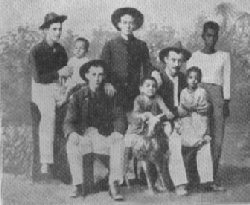|
While the system of public schools in the United States has often been the subject of favorable comment, few people stop to consider the enormous work and the amount. of money spent in this great public work. The annual report of the Commissioner of Labor shows that during the year ending June 30, 1902, the grand total of pupils in public and private schools of our country was 17,299,230, an increase of 278,520 pupils over the preceding year. Of this number, 15,710,394 pupils were enrolled in institutions supported by general and local taxes imposed by states and municipalities. The value of the property used for public school purposes was $756,043,089, an increase from $130,380,008 in 1870. Expenditures for common school purposes, including elementary and secondary schools but excluding higher grades, amounted to $226,043,236, having risen from $64,396,666 in 1870. The expense for schools per capita of population increased from $1.64 in 1870 to $2.93 in 1902. The amount expended per capita varies much in different states. It is $4.65 in California, $5.30 in Nevada, $5.18 in Colorado, $4.93 in Massachusetts, and $4.60 in New York. The rural populations generally expend less. The number of high schools supported by public money in 1901 was 6,318. The recent extension of our national rule over some of the islands of the Orient involves the imparting of knowledge under governmental supervision to multitudes of untaught children in those far-away insular possessions. The expense of the new educational system in the Philippines is mounting up to a high figure. "Uncle Sam" has already appointed a small army of teachers and has stationed them in all parts of the archipelago, with instructions to saturate the young barbarians as thoroughly as possible with American ideas and information. Above all, they are to be taught English, and immense quantities of schoolbooks in that language—geographies, arithmetics, readers, etc., have been shipped across the ocean for their use, together with slates and pencils, pens and copy-books, blackboards and chalk, maps and globes and other such apparatus ad libitum. Under Spanish rule the educational system in the islands was exceedingly primitive. Girls were taught embroidery and needlework, but were not supposed to require other knowledge. Schooling ordinarily ended with the tenth year of the pupil, and teachers were so poorly paid that their calling was looked down upon. The first act of the Philippine commission when it turned its attention to the work of education was to make schooling compulsory, while free of cost, so as to bring it within reach of the laboring classes and the poor. School attendance is obligatory on all native children between the ages of six and twelve years. Since then the archipelago has been divided into seventeen educational districts, with an American school superintendent in charge of each. One thousand American teachers for primary work have been appointed and assigned to stations in the various towns, with 200 additional teachers in higher branches. Besides these 3,400 Filipino teachers have received appointments, and provision has been made for instruction in the English language in 1,500 schools, in which over 200,000 children are enrolled. Night schools for adults and others unable to attend during the day have been opened throughout the islands. The Filipino teachers get one-half the salaries of the American teachers, who are paid from $1,000 to $1,200 per annum. Trade schools in the large towns have been organized. A number of agricultural schools will soon be in operation, and, as a means of preparing the natives for employment in the signal corps, telegraphy is now being taught. The Filipinos are to be educated in schools organized on the American plan. Rebellious natives may lay down their arms only to take them up again later, but the present generation is learning English and singing "The Star-Spangled Banner," and will not be in the least disposed to indulge in insurrection. Already schoolhouses are being built everywhere and everybody tries to speak English. American school-books to the number of 750,000 have already been shipped to the Philippines, together with enormous quantities of school supplies, including 20,000 modern school desks. At present most of the children have to sit on benches without backs. The Filipino children are noticeably bright and precocious, learn rapidly, and teach their parents English. One teacher reports that he can more easily govern 300 Filipino children than fifty young Americans. The native boys are most fond of football, leapfrog, pitching pennies, and flying kites, introducing the element of gambling wherever possible. Of the games introduced by the American teachers they take most interest in baseball, hop-scotch and prisoner's base. The girls enjoy running games, song and dance games and jackstraws, but the American teachers have introduced among them blindman's-buff, hideand-seek, jumping the rope, crack the whip and the dressing of dolls. The oddest of all educational volumes is the Filipino grammar—the first one to be issued—which has just made its appearance. It has three primitive, vowel sounds—a, i and u—which seem to be of European origin. The other vowel sounds—e and o—are used chiefly in printing and in words of Spanish origin, but they are pronounced like "i" and "u" respectively. The tangalog alphabet is an easy one. There are only 15 simple and two compound sounds, but quite enough for the vocabulary of a Filipino. Adjectives are generally formed by prefixing "ma" to the root. Comparison is expressed by duplication, thus: "Mabuti," good; "Mabubuti," best. The same simple method is in use in expressing the various moods and tenses of verbs. Thus, the root, "aral," means study; "mag-aral," to study; "mag-a-aral," I study; "mag-a-aral aco," I shall study.
HOW THE UNITED STATES GOVERNMENT EDUCATES THE INDIAN |
